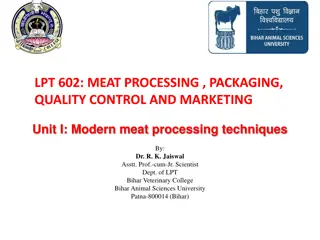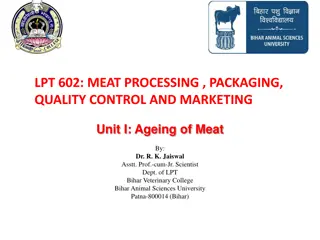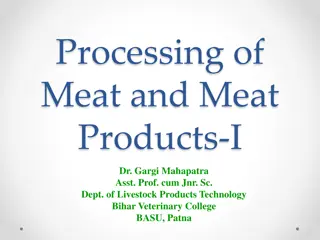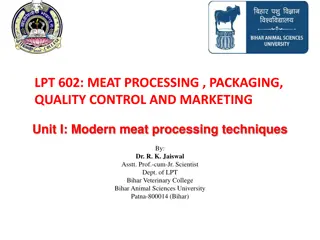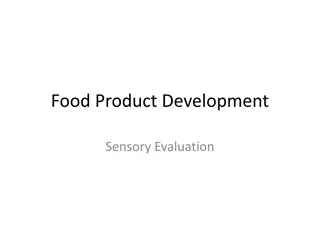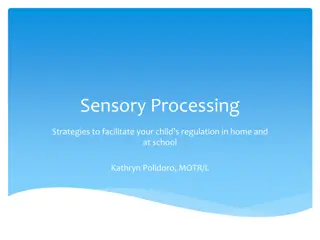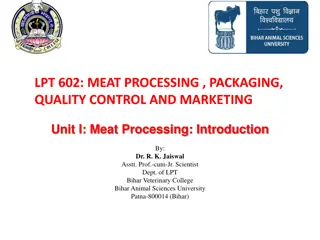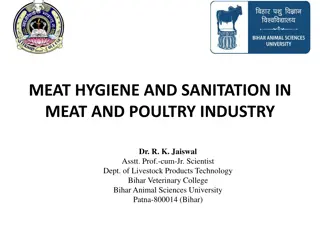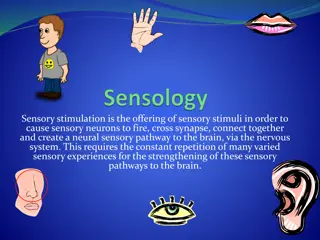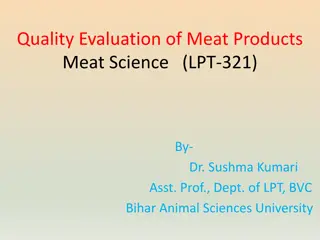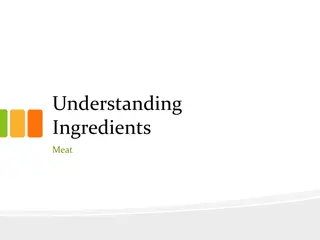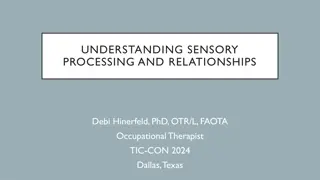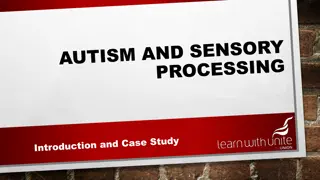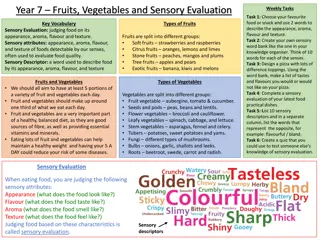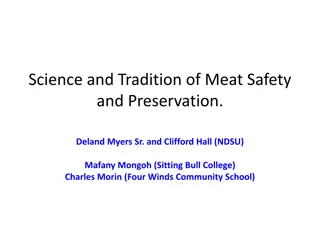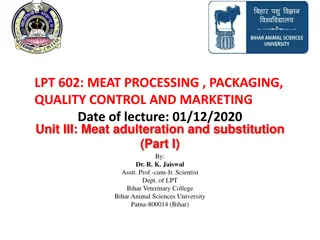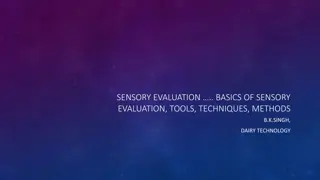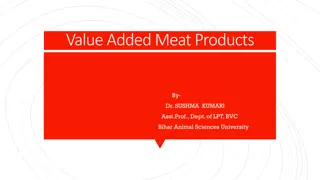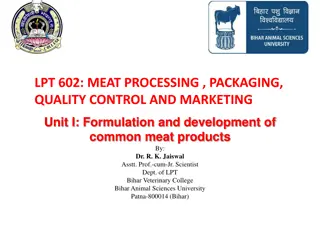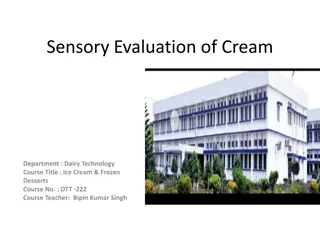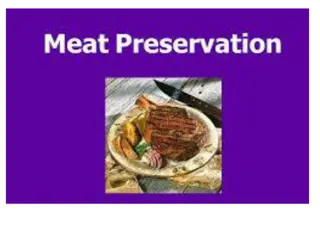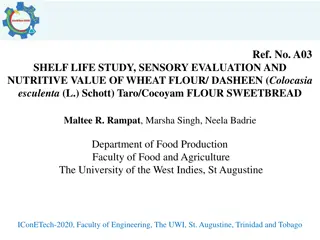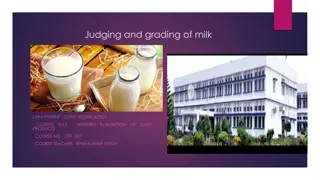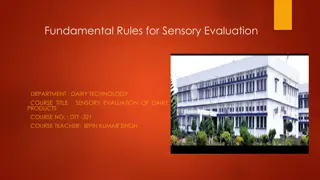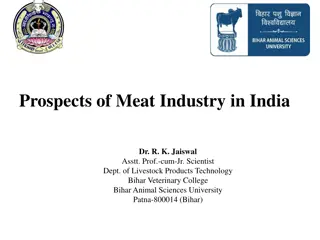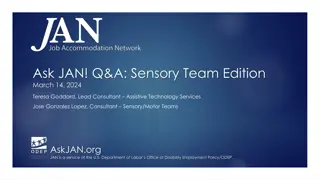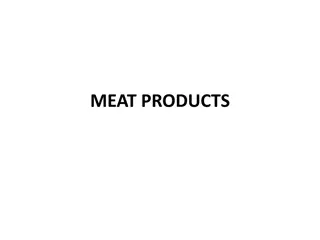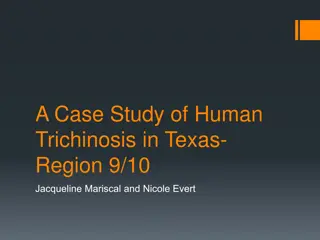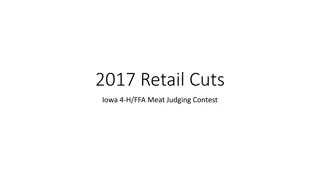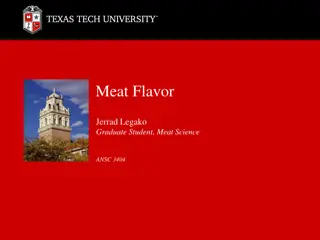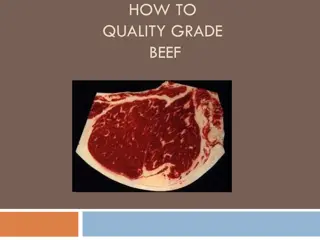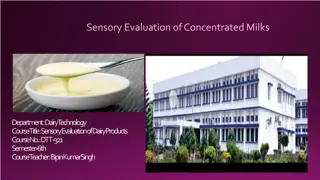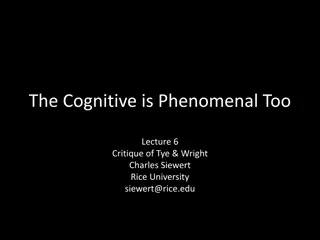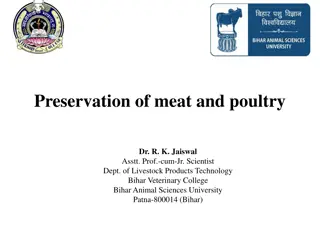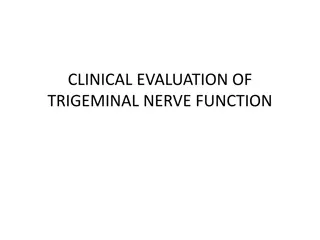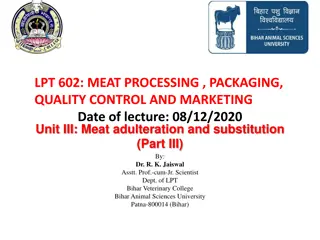Sensory Evaluation Techniques in Meat Processing: A Comprehensive Overview
Explore the various sensory evaluation techniques used in meat processing, including Ranking Test, Rating Test, Flavour Profile Test, and Texture Profile Test. Learn how panelists evaluate food samples based on specific properties like sweetness and preference, providing valuable insights for quality control and marketing in the meat industry.
Download Presentation

Please find below an Image/Link to download the presentation.
The content on the website is provided AS IS for your information and personal use only. It may not be sold, licensed, or shared on other websites without obtaining consent from the author. Download presentation by click this link. If you encounter any issues during the download, it is possible that the publisher has removed the file from their server.
E N D
Presentation Transcript
LPT 602: MEAT PROCESSING , PACKAGING, QUALITY CONTROL AND MARKETING Date of lecture: 23/11/2020 Unit II: Sensory Evaluation (Part V) By: Dr. R. K. Jaiswal Asstt. Prof.-cum-Jr. Scientist Dept. of LPT Bihar Veterinary College Bihar Animal Sciences University Patna-800014 (Bihar)
Ranking test Ranking of food samples according to a specific property e.g. sweetness Panelist are presented all samples with code number and are asked to rank. The Panelist are asked to rank the coded samples according to there preference Sample code Ranking order 315 2 837 315 642 837 1 642 3
Rating test Rating of food samples according to a scale to find out the degree of preference for each food sample 1 dislike a lot 2 dislike moderately 3 neutral 4 like moderately 5 like a lot Prepare the food samples. Ask each taster to taste each sample in turn and tick a box, from '1 Dislike Very Much' to '5. Like Very Much to indicate their preference. This is a 5-point-scale. Sometime a 9-point-scale is used. The taster may also wish to make remarks about the products appearance, taste, odour and texture. Sample code Degree of preference 315 5 837 3 642 4 315 837 642
Flavour Profile Test Descriptive method of sensory analysis which provides a written record of the products perceptible aroma, flavour components (notes), feeling factors Uses panel of 4 - 6 trained panellists Panel sit round table and evaluate one sample at a time and record the ratings Panel then discusses ratings and arrives at a consensus Advantage of small panel, not require statistical analysis Disadvantages: Disadvantages: Consensus method means risk of bias from dominant personality Danger of lack of consistency and reproducibility 4
Texture Profile Test Descriptive method & provides a systematic approach to the measurement of textural dimensions of a food 6 to 9 screened and trained members Three stage for assessment of textural attributes Initial stage - Mechanical characteristic (hardness, viscosity, brittleness ) & geometrical characteristics Second stage- Mechanical characteristics like gumminess, chewiness, adhesion etc. and geometrical characteristics Third stage - Residual changes that occur during mastication (rate of breakdown, type of breakdown, moisture absorption, mouth coating etc.) Applied in new product development, product matching, product improvement, process changes, storage stability and quality control of various meat products 5



